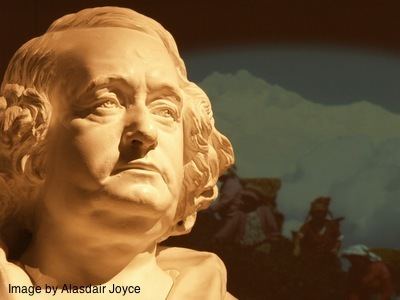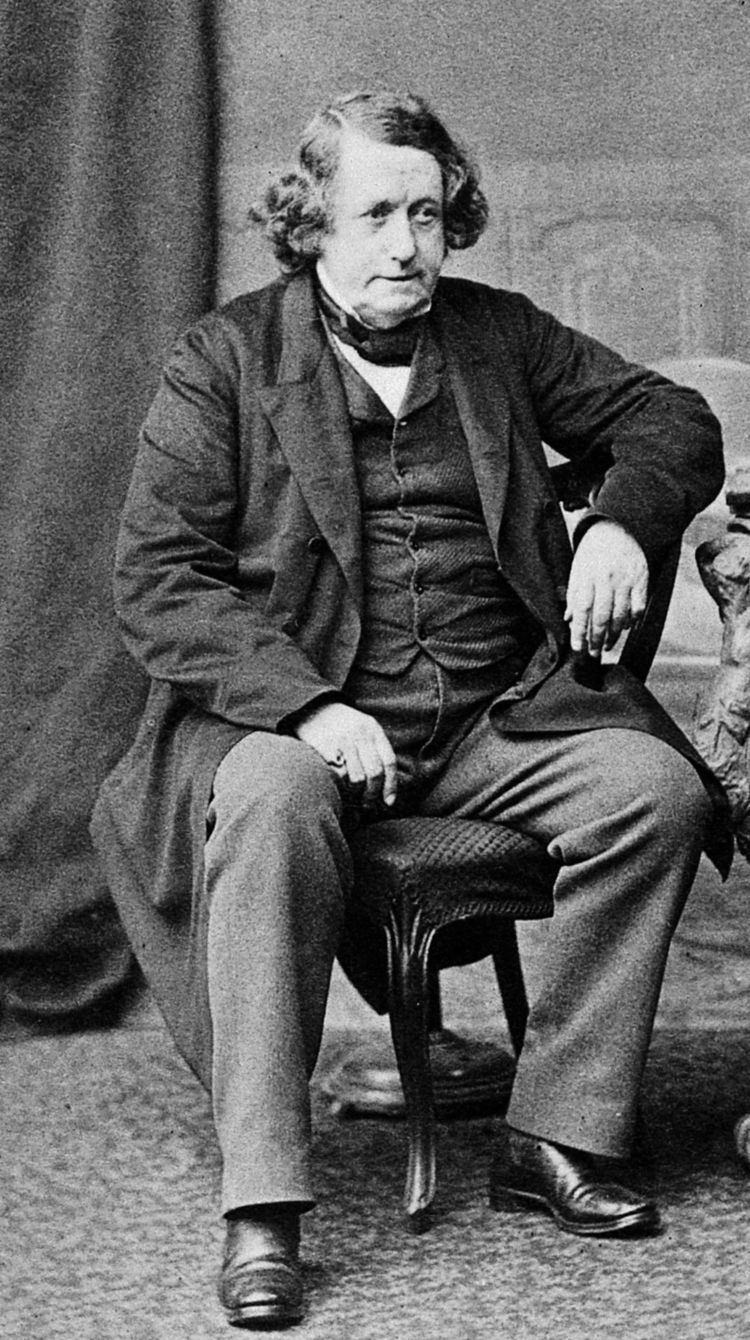Citizenship British Known for Punctuated equilibrium Nationality Scottish | Name Hugh Falconer Role Geologist | |
 | ||
Born 29 February 1808Forres, Scotland ( 1808-02-29 ) Alma mater University of AberdeenUniversity of Edinburgh Died January 31, 1865, London, United Kingdom Books Palaeontological Memoirs and Notes of the Late Hugh Falconer,... ...with a Biographical Sketch of the Author,... Education | ||
Hugh Falconer MD FRS (29 February 1808 – 31 January 1865) was a Scottish geologist, botanist, palaeontologist, and paleoanthropologist. He studied the flora, fauna, and geology of India, Assam, and Burma, and was the first to suggest the modern evolutionary theory of punctuated equilibrium. He was the first to discover the Siwalik fossil beds, and may also have been the first person to discover a fossil ape.
Contents

Early life
Falconer was the youngest son of David Falconer of Forres, Elginshire. In 1826 Hugh Falconer graduated at the University of Aberdeen, where he studied natural history. Afterward, he studied medicine in the University of Edinburgh, taking the degree of MD in 1829. During this period he zealously attended the botanical classes of Prof. R. Graham (1786–1845), and those on geology by Prof. Robert Jameson, the teacher of Charles Darwin.
Falconer became an assistant-surgeon on the Bengal establishment of the British East India Company in 1830. Upon his arrival in Bengal he made an examination of the fossil bones from Ava, upper Burma in the possession of the Asiatic Society of Bengal. His description of the fossils, published soon afterward, gave him a recognized position among the scientists of India. Early in 1831 he was posted to the army station at Meerut, India, in the North Western Provinces.
Siwalik Hills
In 1832, Falconer became Superintendent of the Saharanpur botanical garden, India, succeeding John Royle. Falconer remained at Saharanpur until 1842, during which time he became widely known for his study of fossil mammals in the Siwalik Hills. Falconer observed long periods of evolutionary stasis in these mammals with short periods of rapid evolutionary change throughout geological time. This research shows great foresight. Niles Eldredge and Stephen Jay Gould developed the same basic theory a century later, a theory known as punctuated equilibrium.
Falconer and his associates may have made the first discovery of a fossil ape, in the 1830s in the Neogene deposits in the Siwalik Hills. In the Tertiary strata of the Siwalik Hills in 1831 Falconer discovered bones of crocodiles, tortoises and other animals. With others, he later brought to light a sub-tropical fossil fauna of unexampled extent and richness, including remains of Mastodon, the colossal ruminant Sivatherium, and the enormous extinct tortoise Colossochelys Atlas. Falconer also published a geological description of the Siwálik Hills in 1834. For these valuable discoveries he and Proby Cautley (1802–1871) together received the Wollaston Medal from the Geological Society of London, its highest award, in 1837.
In 1834 Falconer was asked by a Commission of Bengal to investigate the commercial feasibility of growing tea in India. On his recommendation tea plants were introduced, and the resultant black tea became competitive with Chinese teas.
Falconer returned from India in 1842 because of ill health. He brought back 70 large chests of dried plants and 48 cases of fossils, bones and geological specimens. He then travelled throughout Europe making geological observations, and was elected Fellow of the Royal Society in 1845. Continuing in the service of the British East India Company as a naturalist, he pursued research at the British Museum and East India House and prepared casts of the most remarkable fossils for the leading museums of Europe.
Calcutta
In 1847 Falconer became superintendent of the Calcutta Botanical Garden and professor of botany in the Medical College, Calcutta, near his older brother, Alexander Falconer, a Calcutta merchant. Hugh Falconer served as an advisor to the Indian government and the Agricultural and Horticultural Society of Bengal, the de facto colonial "Department of Agriculture". He prepared an important report on the teak forests of Tenasserim, and this saved them from destruction by reckless felling. Through his recommendation, the cultivation of the cinchona in the Indian empire was introduced for the medicinal use of its bark in the treatment of malaria.
Later years
Having to leave India again in 1855 because of ill health, he spent the remainder of his life examining and comparing fossil species in England and the Continent to those he found in India, notably the species of mastodon, elephant, and rhinoceros. He also described some new mammalia from the Purbeck strata of Wessex. Turning to the subject of human origins, he reported on the bone caves of Sicily, Gibraltar, Gower and Brixham.
Falconer served as vice-president of the Royal Society 1863-1864. Although suffering from exposure and overwork, Falconer returned hastily from Gibraltar to support Charles Darwin's claim to the Copley Medal in 1864. Falconer succumbed in London, England, on 31 January 1865 from rheumatic disease of the heart and lungs. He is buried in Kensal Green Cemetery, London.
The flower Rhododendron falconeri was named after Falconer by Joseph Dalton Hooker.
Falconer's botanical notes, with 450 coloured drawings of Indian plants, were deposited in the library at Kew Gardens, together with some of the specimens he collected. A marble bust was placed in the rooms of the Royal Society of London, and another in the Asiatic Society of Bengal, Calcutta. A competitive Falconer scholarship of £100 per year was created for graduates in science or medicine of the University of Edinburgh.
The Falconer Museum in Forres, Scotland (57.609906°N 3.612346°W / 57.609906; -3.612346 (Falconer Museum)) exhibits the story of Hugh Falconer as well as stories of local and Scottish interest.
